Chuck Yeager, the Legendary Pilot Who Broke the Sound Barrier, Dies at 97
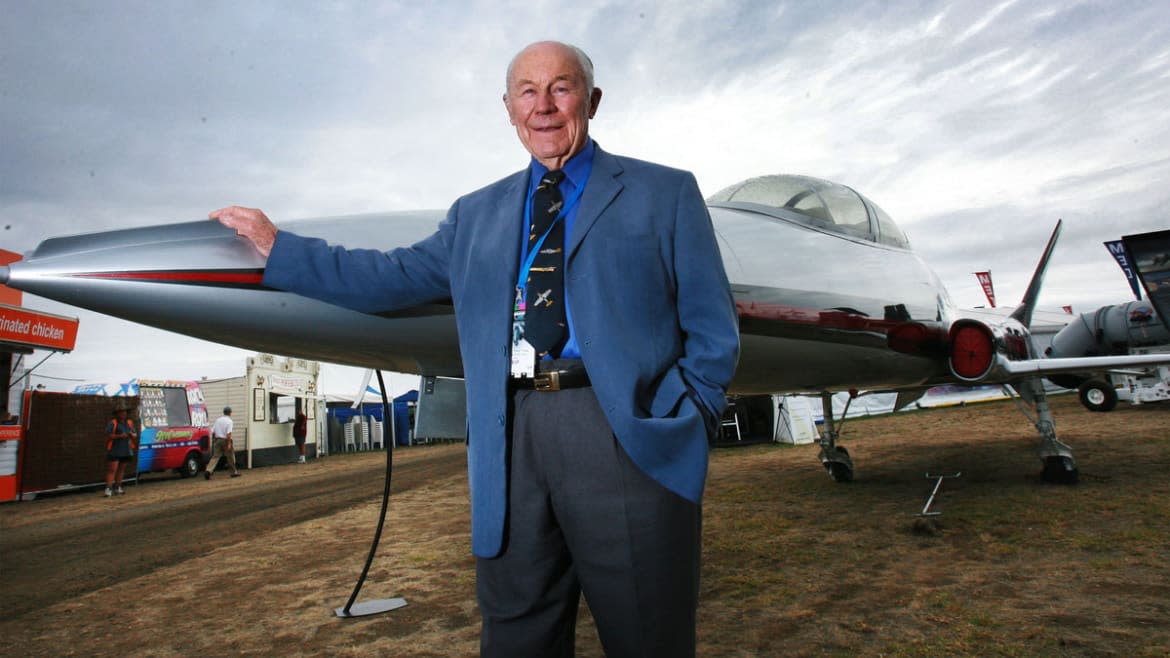
- Oops!Something went wrong.Please try again later.
Chuck Yeager, the legendary pilot who helped to make the United States a world leader in the air and in space, died Monday at 97.
As an Air Force test pilot, Yeager was the first person to break the sound barrier, in October 1947. Six years later he became one of the first people to fly at two times the speed of sound. Toward the end of his test-pilot career, Yeager helped to train America's first astronauts.
But Yeager didn’t just excel at what he called “research flying.” He was also a fearsome warrior. He shot down at least a dozen German planes during World War II and, two decades later, flew 127 combat missions over Vietnam. He led fighter squadrons in Germany and South Korea during the Cold War.
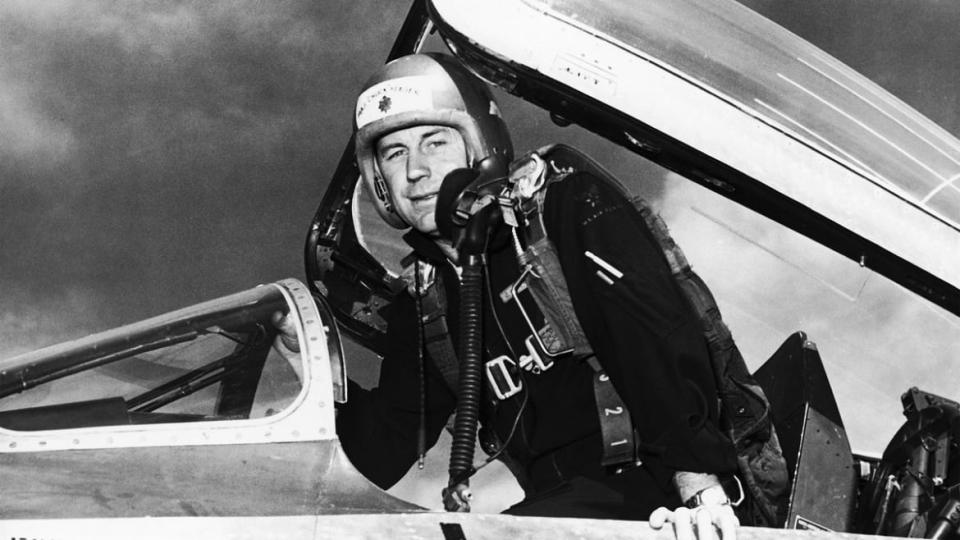
He stayed busy in retirement—advising on films and video games, sitting on government commissions, and giving hundreds of speeches. He kept flying until the very end of his life, racking up more than 17,000 flight hours on more than 150 plane types. In early 2017, he was still tooling around in a propeller-driven “taildragger.”
Charles Elwood Yeager was born on Feb. 13, 1923, in Myra, West Virginia. His parents were farmers. The second of five children, he grew up hunting and fishing, and later claimed that by the age of 12 he’d already killed 26 black bears.
As a child, Yeager’s only exposure to airplanes was seeing them fly high overhead. “I had no interest in airplanes,” he said in a 1991 interview. But he had great eyesight, a head for math, and hunter’s instincts—qualities many of the best combat pilots share.
But late in life, Yeager attributed his success to his father’s example. Albert Yeager was an “honest guy,” Yeager said. “His word was his bond.” He taught young Chuck and his siblings to “finish what you started.” “We were disciplined as kids quite severely if we didn’t do our jobs.”
Yeager enlisted in the Army Air Corps, the predecessor of the Air Force, in September 1941. He trained as an aircraft mechanic. And in the spring of 1942, he flew for the first time—as a passenger on a twin-engine training plane he’d been helping to maintain. He threw up. “I didn’t particularly care for it,” Yeager said seven decades later.
He quickly changed his mind, and thrived as a combat pilot flying P-51 fighters over Europe. On March 4, 1944, he shot down his first enemy plane, a German Me-109. “To me it was a lot easier than I thought it would be,” he said later.
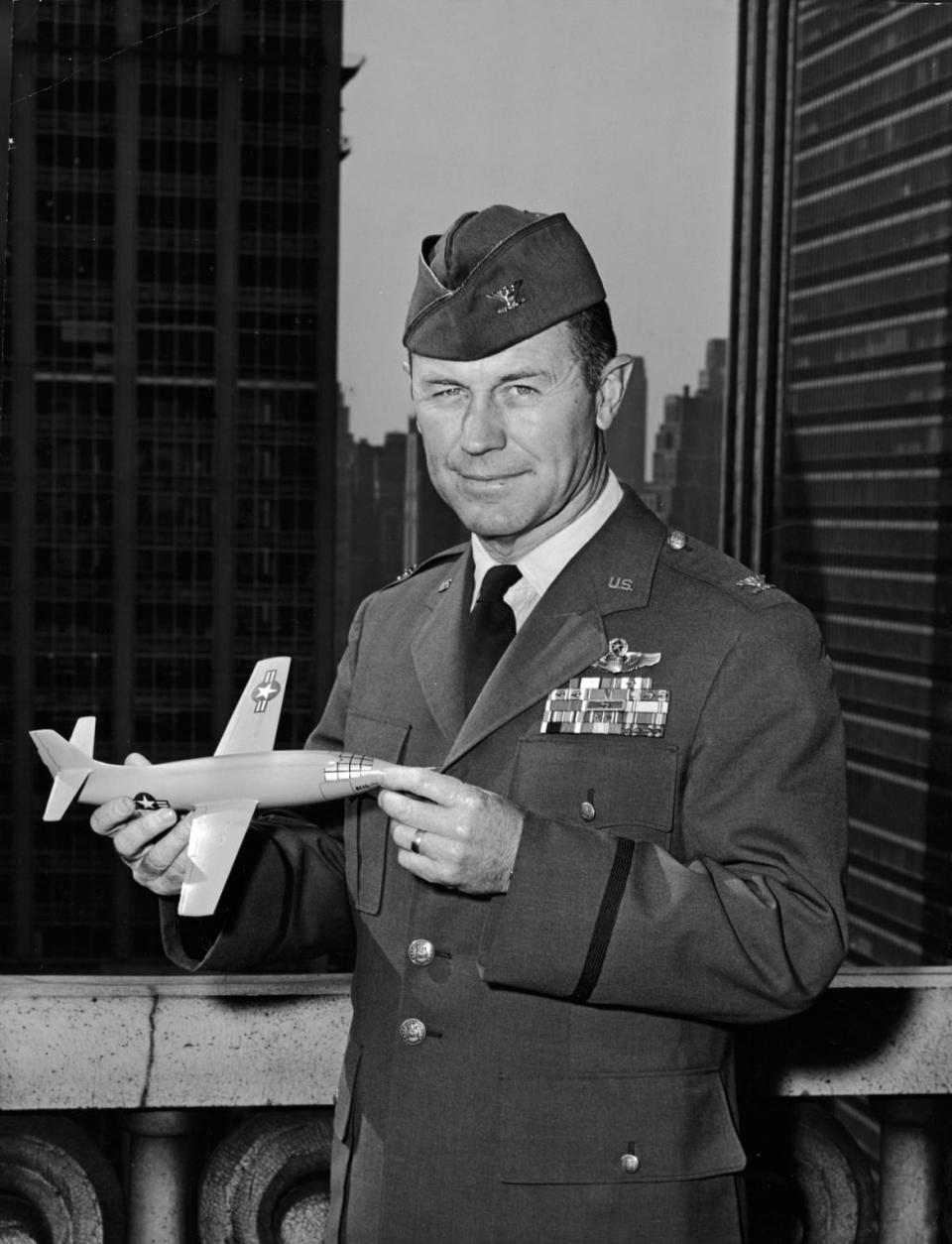
The very next day, three German fighters got the jump on Yeager. “Me and the airplane parted company,” he later quipped. He parachuted to the ground with bullets lodged in one leg and metal fragments embedded in a hand—injuries he dismissed as “minor.”
German troops were looking for him. “Obviously, you’ve got to hide.” He spent a day deep in the woods. After the Germans gave up searching, Yeager took a chance and approached a French wood-cutter.
Fortunately for Yeager, the Frenchman was sympathetic. “He knew I needed some kind of help.” Yeager’s rescuer handed the American over to the French Resistance, who sneaked him across the Pyrenees into neutral Spain, where the United States traded precious gasoline for the pilot’s safe return to Great Britain. “Yeager, when you’re shot down, you’re supposed to stay down,” his commander joked.
“The French saved my life,” Yeager recalled in 2017. “At least one Frenchwoman was glad—you’ll never guess why,” he added, an apparent reference to his future second wife, whose last name is French.
Yeager returned to combat in time to fly top cover for the Allied invasion of German-occupied France in June 1944. “It’s your duty to fly the airplane,” he explained. “If you get killed in it, you don’t know anything about it, anyway.”
“Duty,” Yeager said, “is paramount.”
When the war ended, Yeager became one of the first government test pilots. Prior to that, research flying had been the purview of private pilots working for the big airplane manufacturers.
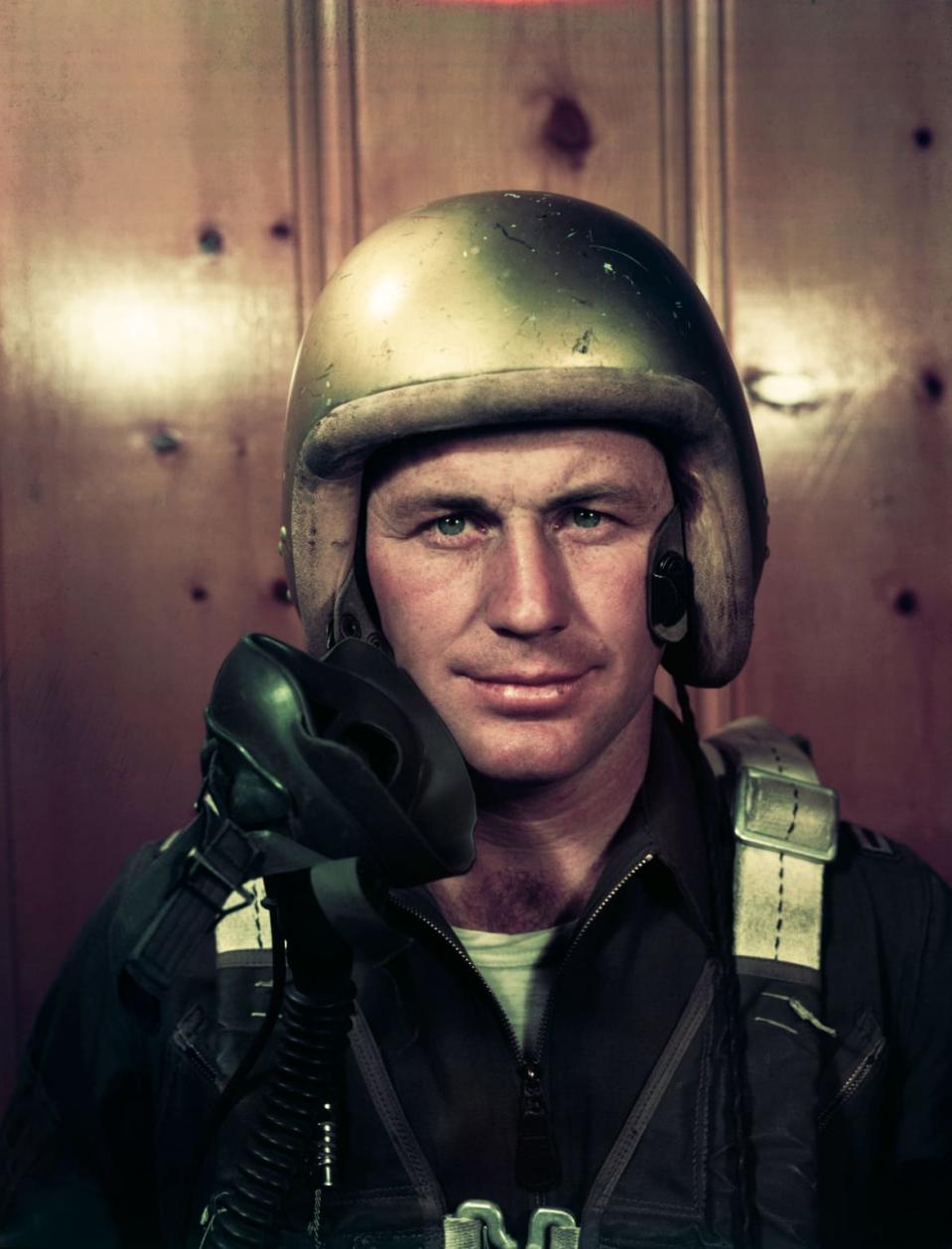
Taking off from a dry lake bed in California—the future site of Edwards Air Force Base—Yeager and his fellow test pilots daily advanced the science of flight, then still in its infancy. “We weren’t getting free houses or notoriety,” Yeager recalled decades later. “We were working our tails off for $250 a month. Many of us were dying in the process.”
One of Yeager’s early challenges was to understand a phenomenon he and other combat pilots had discovered during World War II. In a steep dive, P-51s and other fighters would begin violently shaking at around 80 percent of the speed of sound, which is around 760 miles per hour at ground level.
The turbulence became known as the “sound barrier.” It was an obstacle Yeager was the first to cross. Bell Aerospace built the special X-1 rocket plane specifically to punch through the sound barrier. Its liquid-fueled motor was like a frigid bomb. Its strong, thin wing reduced drag. The X-1 was a tough, volatile speed demon. “It was a pleasure to fly,” Yeager said.
But the orange-painted rocket-plane’s secret, Yeager discovered, was the movable horizontal stabilizers at its rear. As the X-1 approached the speed of sound, it tended to nose up and lose power. So Yeager angled the horizontal stabilizer downward by one degree to force the nose down. “We now have control of this thing,” he recalled thinking.
Punching through the sound barrier for the first time on Oct. 14, 1947, Yeager opened up a world of possibilities. Supersonic fighter planes and airliners soon followed. Building on the achievements of Yeager and other test pilots, in the mid-1950s the Air Force launched a space program, aiming to put men in orbit by 1966 inside a rocket-powered “spaceplane” called the X-20.The X-20 would have launched vertically atop a rocket booster, orbited Earth to spy on other countries or even drop bombs, then returned to the planet’s surface and landed like an airplane. It was like a military version of the Space Shuttle—20 years before the Space Shuttle’s first flight.
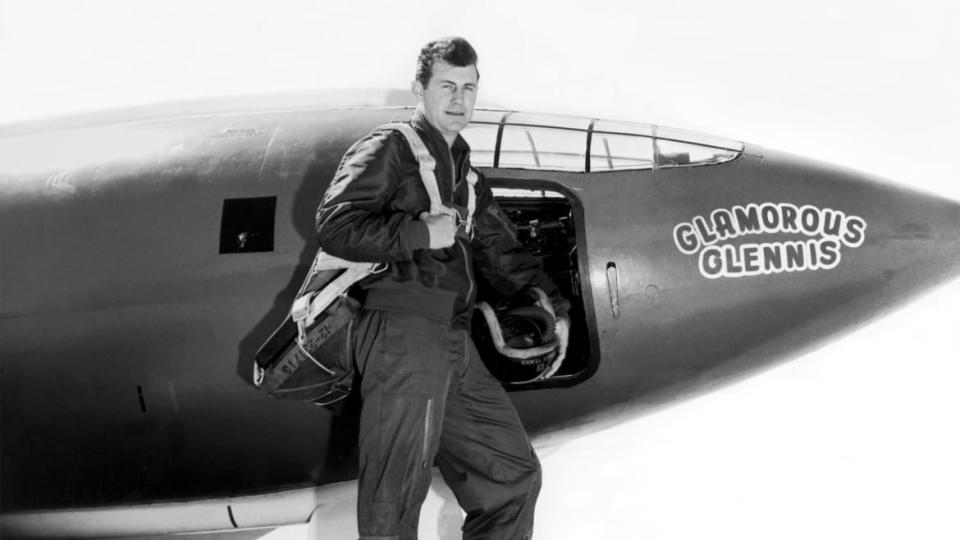
Yeager standing next to the Air Force’s Bell X-1 supersonic research aircraft, Muroc Army Air Force Base, California, October 1947. Yeager named it the Glamorous Glennis after his wife.
Returning to the test community after several years commanding fighter squadrons in Europe, in the early 1960s Yeager set several flying records. In December 1963 he ejected from an out-of-control F-104, effectively ending his record attempts.
Around the same time, Yeager was helping to train some of the first Air Force astronauts. And he remembered being “disappointed” when, in 1963, President John F. Kennedy canceled the X-20. From then on NASA, rather than the military, would oversee America’s space program.
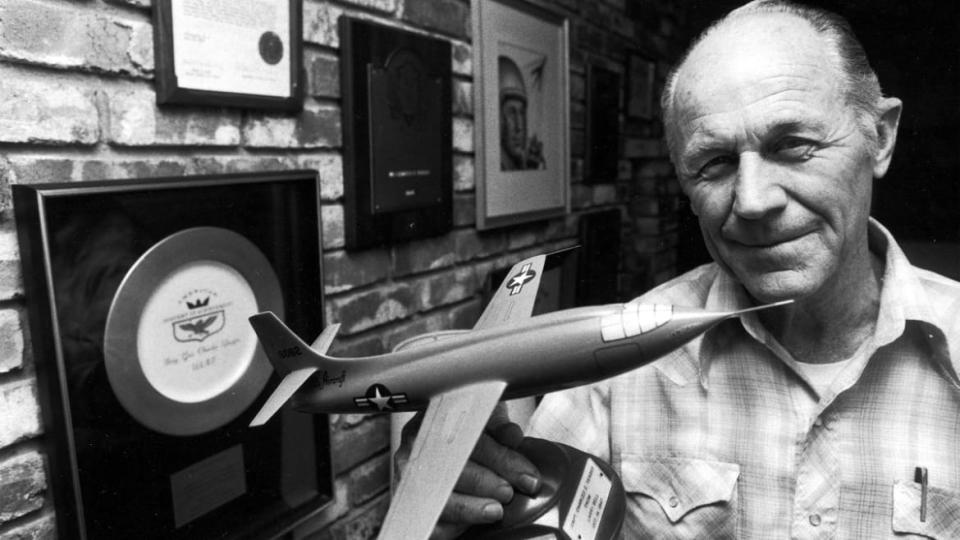
As late as 1991, Yeager was still bitter over the decision. If the government had stuck with the X-20, “we’d be 15 years ahead of where we are now” in space, Yeager claimed.
In 1966, the famed test pilot returned to war—this time flying B-57 bombers over Vietnam from a base in the Philippines. In January 1968, North Korean troops seized the Navy intelligence ship USS Pueblo, sparking an international crisis. The Air Force sent Yeager to South Korea with a wing of F-4 fighters as a show of force. Retiring from the Air Force as a brigadier general in 1975, Yeager flew air shows, rebuffed an entreaty to enter politics, and advised the cast and crew of the blockbuster 1983 movie The Right Stuff.
The actor and playwright Sam Shepard portrayed Yeager in the film. Shepard and Yeager spent some time together on location. “I got to talking to him about flying and all that,” Shepard recalled. “And he says, it’s not true that you don’t have fear. You know, fear is part and parcel of the thing that you take on is that you’re able to face it, you know.”
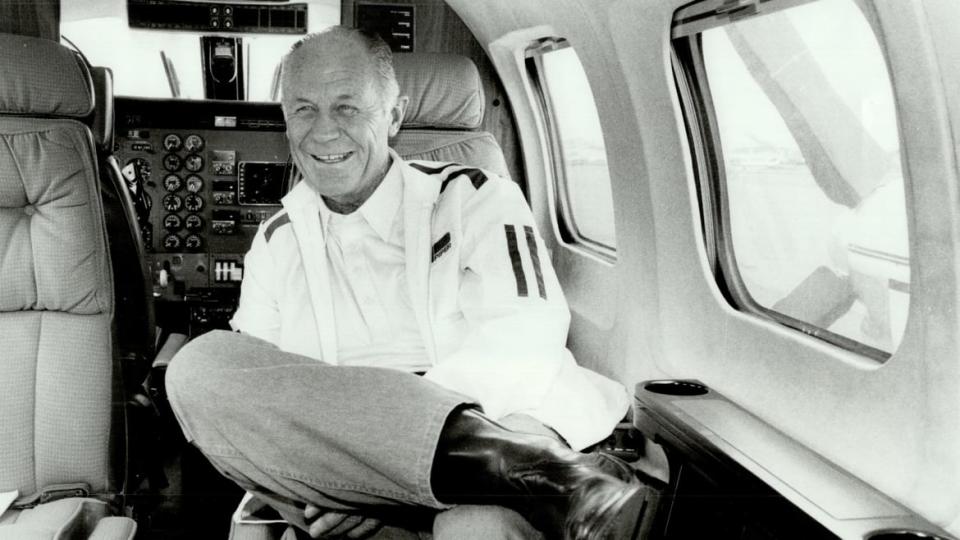
“I went up with him actually once in a little Piper Cub over the desert because, you know, if I’m going to crash, I might as well go down with the world’s greatest pilot,” Shepard added.
Settling in California, Yeager gave hundreds of speeches, occasionally advised filmmakers, video-game developers, and the government... and kept flying. In 2005, he piloted a World War II-vintage P-51 fighter in a race with one of the Air Force’s cutting-edge F-22 stealth fighters.
Yeager quipped that he “won the first mile, but after that ... ”
But for all his flying accomplishments, Yeager expressed the most passion for the women in his life. He had named his P-51 fighter the X-1 rocket plane in which he broke the sound barrier “Glamorous Glenn” and “Glamorous Glennis” after his first wife. Glennis Yeager, née Dickhouse, died of cancer in 1990 at the age of 66. In 2003, the then-80-year-old Yeager married actress Victoria Scott D’Angelo, then 41. It was a controversial marriage. Yeager’s four adult children sued to gain control of the pilot’s estate. They lost. “It doesn’t matter a crap what anybody thinks,” Yeager said of D’Angelo. “I love her. I married her. She’s my wife.”
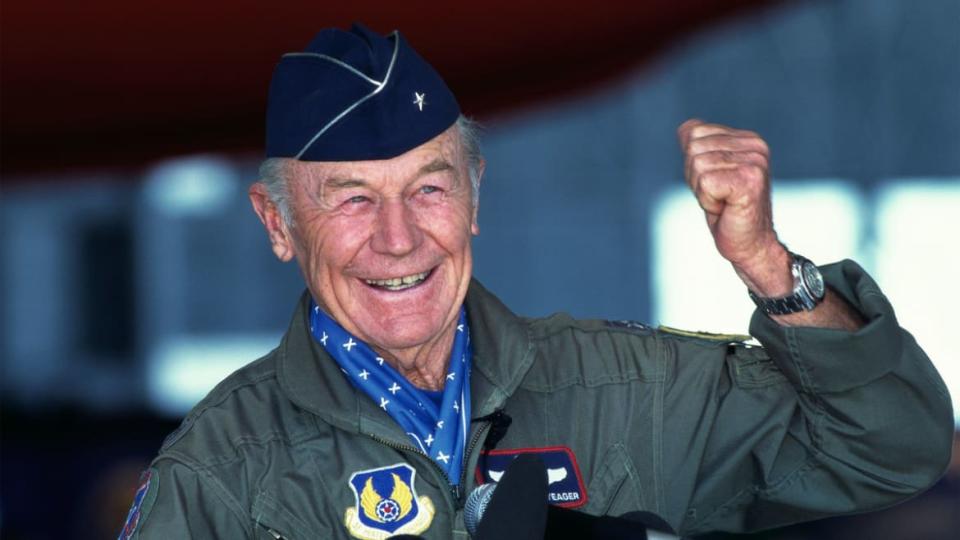
Asked what it felt like to fly faster than the speed of sound in an F-15 fighter, Yeager joked that “it would never replace sex.”
On Monday night, Victoria Yeager announced her husband’s death, writing on Twitter: “It is w/ profound sorrow, I must tell you that my life love General Chuck Yeager passed just before 9pm ET. An incredible life well lived, America’s greatest Pilot, & a legacy of strength, adventure, & patriotism will be remembered forever.”
Got a tip? Send it to The Daily Beast here
Get our top stories in your inbox every day. Sign up now!
Daily Beast Membership: Beast Inside goes deeper on the stories that matter to you. Learn more.

